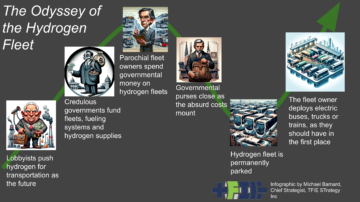This article is the second part of a 4-part series about how clean technology can help defend democracy and human rights. You can find Part 1 here.
High Frequency (aka “Shortwave”) Radio Is A Great Workaround
The only thing this really leaves is high frequency radio, commonly called HF or shortwave. Between about 1-30 MHz, radio waves are reflected by layers of the earth’s ionosphere. This allows them to go around the world if you select the right frequency for the time of day and conditions are good. If you only need to receive information, you can get small battery-powered radios that receive these signals from shortwave broadcasters around the world.
If you want two-way communication, you’ll need a radio transceiver that can send and receive signals in the HF spectrum. This equipment is commonly available to ham radio operators and marine HF users. If you add some computer equipment, you can get by with as little as 2-3 watts of transmit power by sending digital signals and using forward error correction.
This technology is ancient by today’s gadget standards, but it has already been used against authoritarian regimes and invaders. Here’s an example of one amateur radio operator who contributed to Operation Desert Storm when his home country of Kuwait was invaded by Iraq:
Avoiding Being Caught With “Illegal” Gear (Cleantech To The Rescue!)
If you watched the above video, you heard that the brave ham operator who slipped information to foreign governments did get searched. He gave them some old “boat anchor” gear (old junk) that he wasn’t using, and then brought the good stuff out after they were gone. By some miracle, the Iraqi military was too incompetent to figure out that he was sending information to NATO and foreign journalists, whose information rallied the global public to support military action against Saddam Hussein. He was also able to provide information on troop positions that was used for air strikes.
Most modern militaries know better these days. Stray signals on the shortwave bands would be noticed, and direction finding would be used to track the sources of these signals down. In the event of an invasion, you could expect to be imprisoned or killed if caught working against them with “illegal” radio gear.
This is where clean technology can really shine and make a difference.
First, the ability to use small solar panels and lithium batteries enables you to operate small radios and portable antenna systems from anywhere. One way of doing this would be to take a communications backpack to a good transmit site, like on a mountain peak, quickly transmit what you need to transmit, and then quickly move before you’re caught. But, this is still risky because you could be caught with all of that gear either when hiking with it or at your home.
Power efficiency (a critical part of today’s clean technology) can take care of you here, too. By using a low-powered signal, processed by a power efficient computer like a Raspberry Pi or Chromebook, you could use smaller panels, smaller batteries, and have a signal that’s harder to trace. If you’ve got a small stream, hydroelectric power is also a possibility if you’re efficient enough. If you place the antenna in a low spot (but still with a view of the sky), it’s possible to use near-vertical skywaves (NVIS) to further confuse people tracking it.
Or, better yet, set the whole thing up to run without you having to be in physical possession of the gear. Stash a compact radio and computer kit under a solar panel or next to a stream out in the woods somewhere, with antennas stapled to the trees or otherwise hidden. Then, have the little computer also serve as a WiFi router that doesn’t broadcast its SSID, so you can remotely control the computer to send signals. It’s even possible to set it to send signals long after you’re gone from the area and to pick up signals for you to review later.
You could theoretically have hidden sites that have both HF radio gear for long-haul data transmission around the world and the local mesh technology I talked about earlier, both powered by solar.
A sophisticated regime could still find these with enough work, but if they do, you aren’t going to be caught with it. Just stash several of them in different locations and use a different one if one gets burned.
Eroding The Power Of Future Authoritarian Regimes
Getting a few of these stash transmitter sites set up would be a lot harder after authoritarians establish control over an area. So, the best time to build and deploy these is BEFORE you’d need them. With an amateur radio license, it would be perfectly legal to build, test, and use this kind of gear so you’re familiar with its use and have working relationships with others. If things get bad, remove your registered callsign from the computers and start transmitting with a “tactical call sign” instead. In most countries, this would still technically be legal (at least under the legitimate laws before an invasion or coup) because there are exceptions in the rules for situations where you need to transmit to protect life and property.
Should the worst happen in your country, you’d be able to communicate with people across borders to let them know what’s going on and hear what’s happening, bypassing the regime’s control of information and weakening their grip on a society. If you’re out of the country, your familiarity with the gear could help them get the word out. If you’re a journalist, you couldn’t use ham radio (it’s only for hobbyists and non-commercial use) but you could monitor for signals coming out of countries that have fallen to authoritarianism using a cheap USB receiver dongle and a random-length wire strung out a window, like a clothesline.
If you’re interested in participating in such a project, there is a Twitter Account, Facebook Page, and Facebook Group for this. Whether you’re a licensed ham radio operator or not (we can help you get licensed), there’s ways you could help and even receive test signals, so be sure to join up or follow one of these social media links to join the effort! It’s really true that clean technology can help defend democracy and human rights.
Appreciate CleanTechnica’s originality? Consider becoming a CleanTechnica Member, Supporter, Technician, or Ambassador — or a patron on Patreon.

- About
- across
- Action
- Advertise
- All
- already
- Amazon
- antenna
- AREA
- around
- article
- available
- batteries
- being
- BEST
- brave
- build
- call
- Can Get
- care
- caught
- chromebook
- cleantech
- Cleantech Talk
- coming
- Communication
- Communications
- computers
- content
- contributed
- could
- countries
- critical
- data
- day
- Democracy
- DID
- different
- digital
- Doesn’t
- down
- efficiency
- equipment
- Event
- example
- Figure
- follow
- full
- future
- Gear
- Global
- going
- good
- Governments
- great
- Guest
- having
- help
- here
- High
- hiking
- Home
- How
- HTTPS
- human rights
- information
- iraq
- IT
- join
- journalist
- Journalists
- kit
- Laws
- Legal
- License
- Licensed
- lithium
- local
- Long
- Media
- Military
- most
- move
- Others
- otherwise
- Patreon
- People
- physical
- podcast
- possession
- power
- project
- property
- protect
- provide
- public
- Radio
- Raspberry Pi
- Relationships
- review
- rules
- Run
- Series
- set
- shine
- Sites
- small
- So
- Social
- social media
- Society
- solar
- solar panels
- Spot
- standards
- start
- Storm
- Strikes
- support
- Systems
- Talk
- Technology
- test
- the world
- time
- today’s
- track
- Tracking
- us
- usb
- users
- Video
- View
- Voice
- waves
- What
- WHO
- wifi
- Wikipedia
- Wire
- without
- Work
- working
- world
- would
- youtube






